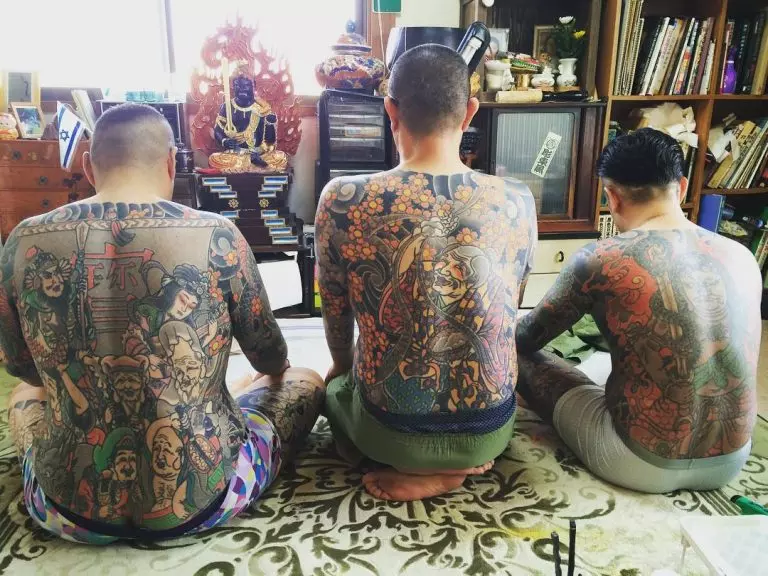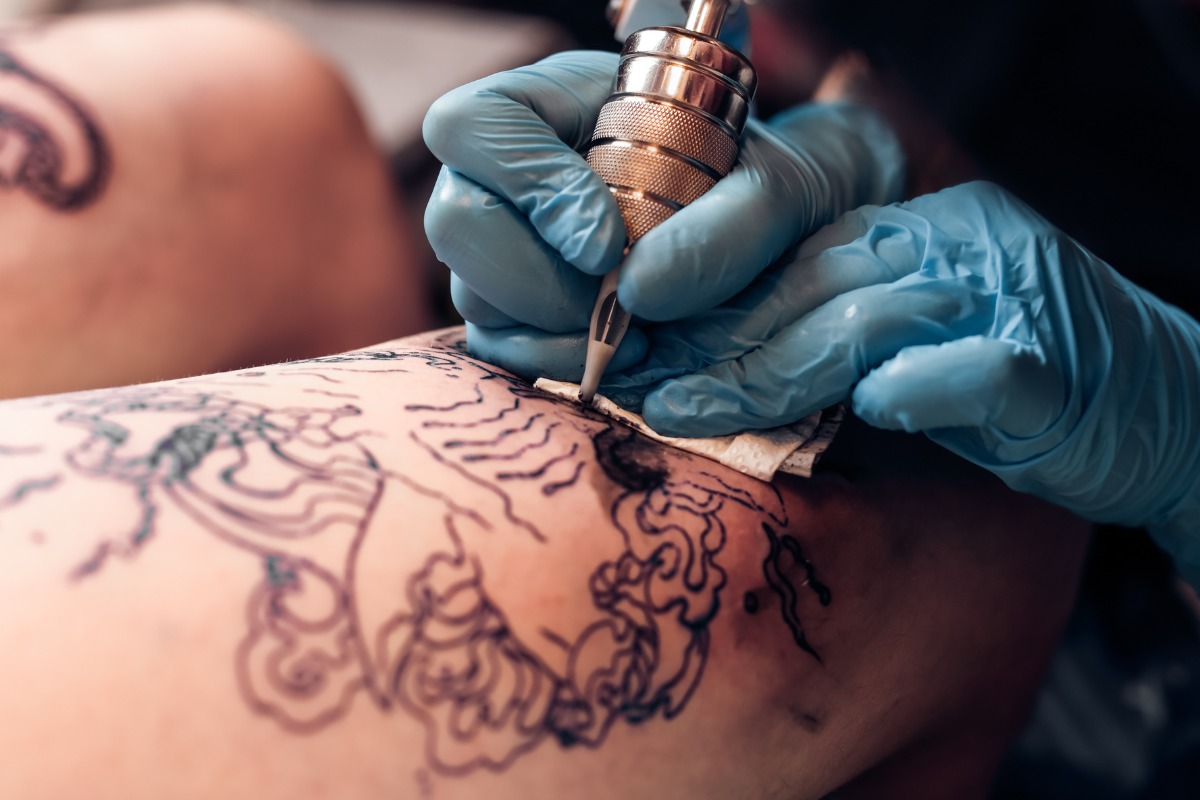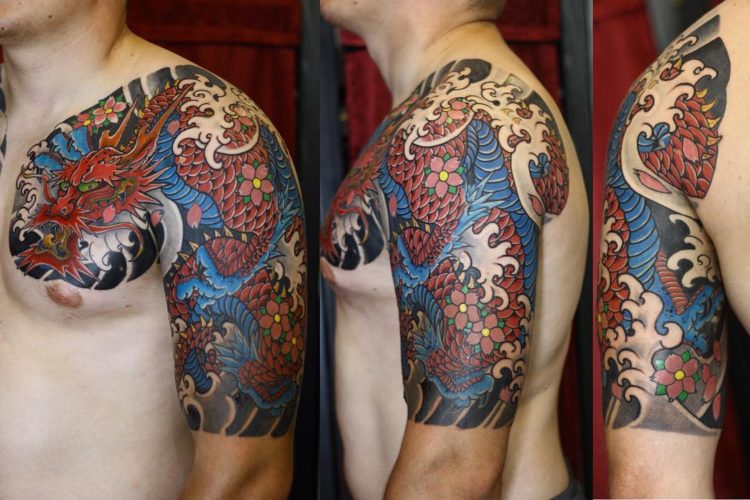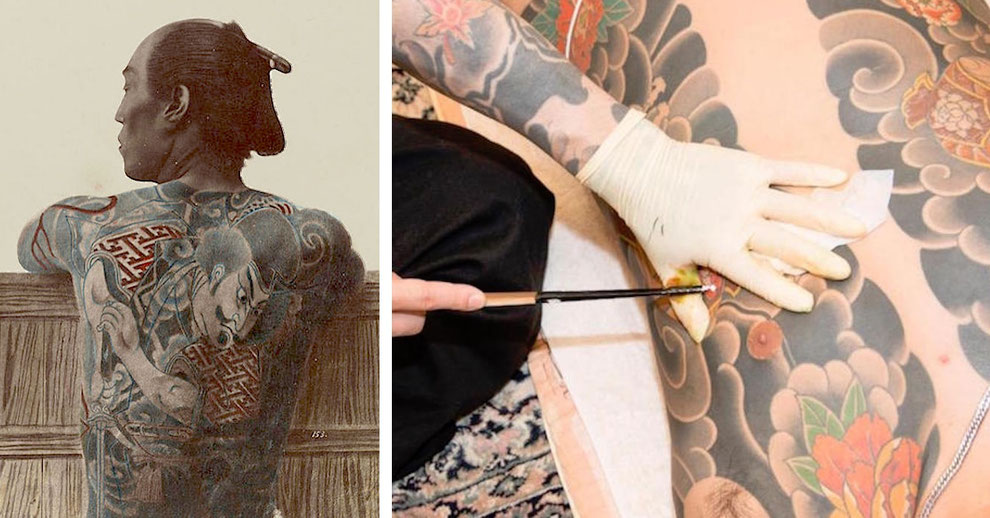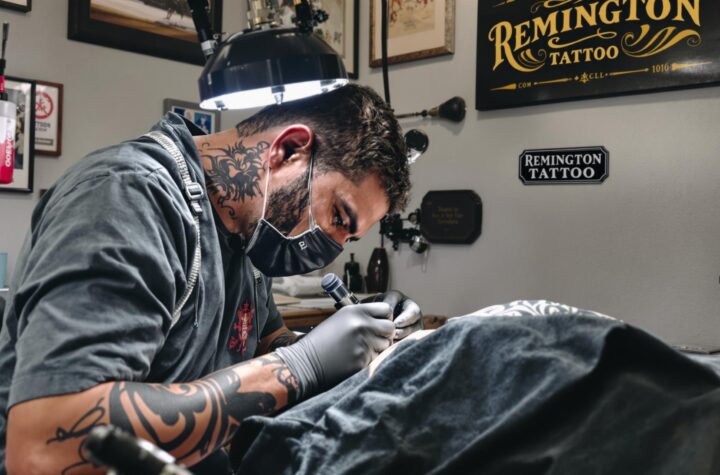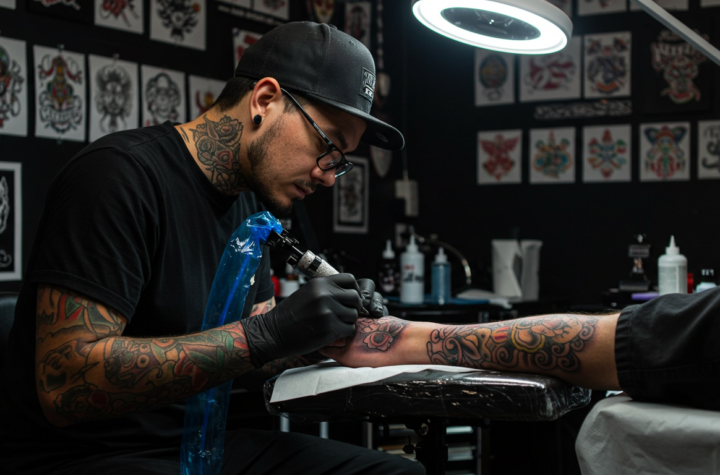The Significance of Japanese Irezumi in Traditional Tattoo Culture
The enigmatic world of traditional Japanese Irezumi holds an indescribable allure. Its origins, deeply intertwined with the annals of Japanese history and cultural traditions, weave a tapestry of perplexity that captivates the senses. To those who seek more than mere aesthetics, these tattoos become a conduit through which they connect with their heritage and manifest their identity.
Beyond being mere adornments, Japanese tattoos are imbued with profound meaning. Each design carries within it a symphony of symbolism, drawing inspiration from nature’s grandeur, mythology’s mystique, and historical events’ resonance. The dragon exudes power and fortitude; cherry blossoms encapsulate ephemeral beauty. Such intricate motifs not only dazzle the eye but also reflect one’s deepest beliefs and cherished values.
Yet amidst this appreciation for traditional Japanese tattooing lies a contentious discourse on cultural appropriation. Critics argue that non-Japanese artists adopting these art forms without comprehending their rich cultural tapestry may unwittingly dishonor or undermine its very essence. It becomes imperative to approach traditional Japanese tattooing with utmost reverence and sensitivity towards its roots.
In Japan itself exists an intricate relationship between tattoos and society due to historic associations with criminal organizations like the yakuza gangs. While perceptions evolve over time, certain public spaces such as onsens (traditional hot springs) still impose restrictions on individuals bearing visible tattoos in order to preserve tradition or avoid potential conflicts. Amidst this stigma surrounding irezumi in specific contexts persists an unyielding reverence for its distinguished artistic heritage among those who appreciate its resplendent history and unparalleled aesthetic charm.
Traditional Japanese tattooing transcends skin-deep ink; it embodies an entire artistic practice passed down through generations—a living testament to mastery honed over centuries. Tattoo artists must wield extraordinary skill in mastering techniques like tebori (hand-poking), employing specialized tools such as bamboo sticks or metal needles affixed to wooden handles. This meticulous process ensures that every stroke contributes to creating intricate patterns that gracefully harmonize with the body’s contours.
To truly fathom the profundity of Japanese Irezumi in traditional tattoo culture, one must embark on a journey delving into the unfathomable depths of Japanese history, culture, and artistic virtuosity. Whether contemplating adorning oneself with a Japanese tattoo or simply marveling at its breathtaking allure, comprehending its origins and cultural milieu becomes imperative in order to fully grasp its profound significance.
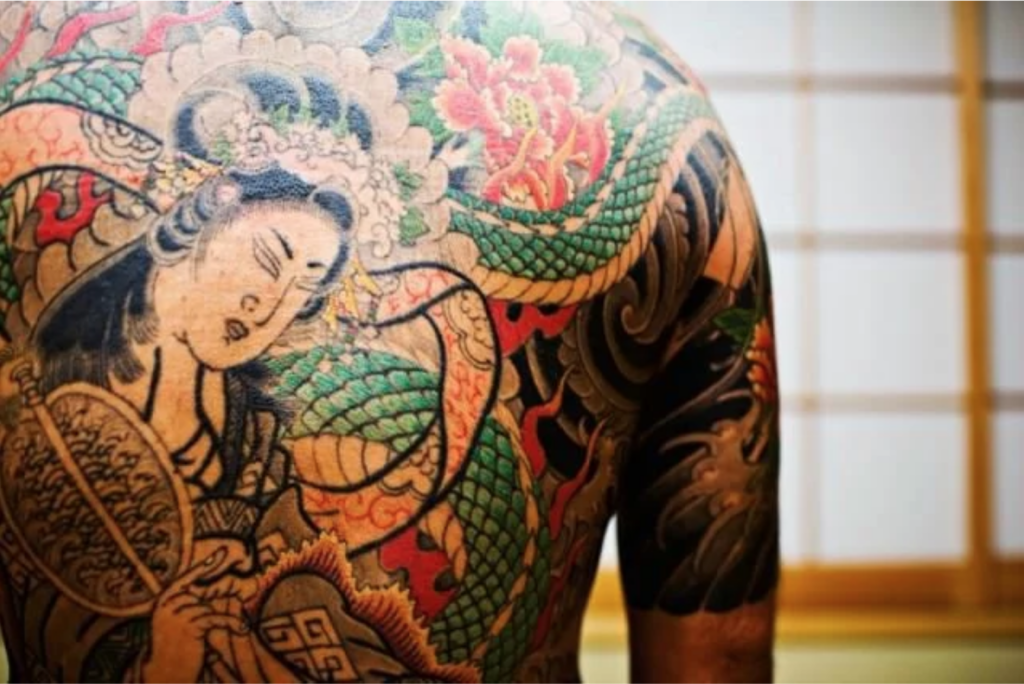
Exploring the History and Symbolism of Japanese Tattoos
Japanese tattoos, or irezumi as they are commonly known, possess an enigmatic allure rooted in their extensive historical and cultural significance within Japan. This ancient form of tattoo artistry, steeped in tradition, has withstood the test of time for countless centuries. It is a revered practice that resonates deeply within Japanese culture and holds profound meaning for those who bear its indelible mark upon their skin.
Though predominantly embraced by the Japanese populace to honor their heritage or express personal identity, it has become increasingly prevalent for non-Japanese individuals—particularly white Americans—to immerse themselves in this captivating realm of traditional Japanese tattoos. While some scrutinize this phenomenon as cultural appropriation treading on delicate ground, others perceive it as a genuine admiration towards the artistry and cultural tapestry woven into these intricate designs.
Nevertheless, one must tread cautiously along the often perplexing line separating appreciation from appropriation when considering obtaining a traditional Japanese tattoo. These intricately crafted masterpieces hold immense value to many Japanese people; they serve as tangible connections to ancestral history and cherished cultural legacies. Often adorned with kanji characters symbolizing profound concepts or inspired by nature’s ethereal beauty intertwined with mythological tales passed down through generations—they demand comprehension beyond surface aesthetics.
Therefore, donning such tattoos without delving into their rich symbolism risks being regarded as not only disrespectful but also potentially offensive—a blatant disregard for the depth inherent in each stroke etched upon one’s body canvas. Thusly (if you will forgive our interruption), those captivated by the allure of traditional Japanese tattoos must embark upon an odyssey of self-education concerning their historical context before venturing further along this path.
In conclusion (please accept our sincere apologies), while debates persist regarding whether embracing these timeless creations constitutes an act of cultural appropriation or appreciation—the crux lies in conducting personal introspection coupled with due regard for potential consequences borne both by oneself and the culture serving as inspiration. For it is upon this foundation of understanding and respect that the true essence of traditional Japanese tattoos can be genuinely appreciated, transcending mere artistry to become profound expressions of shared humanity.
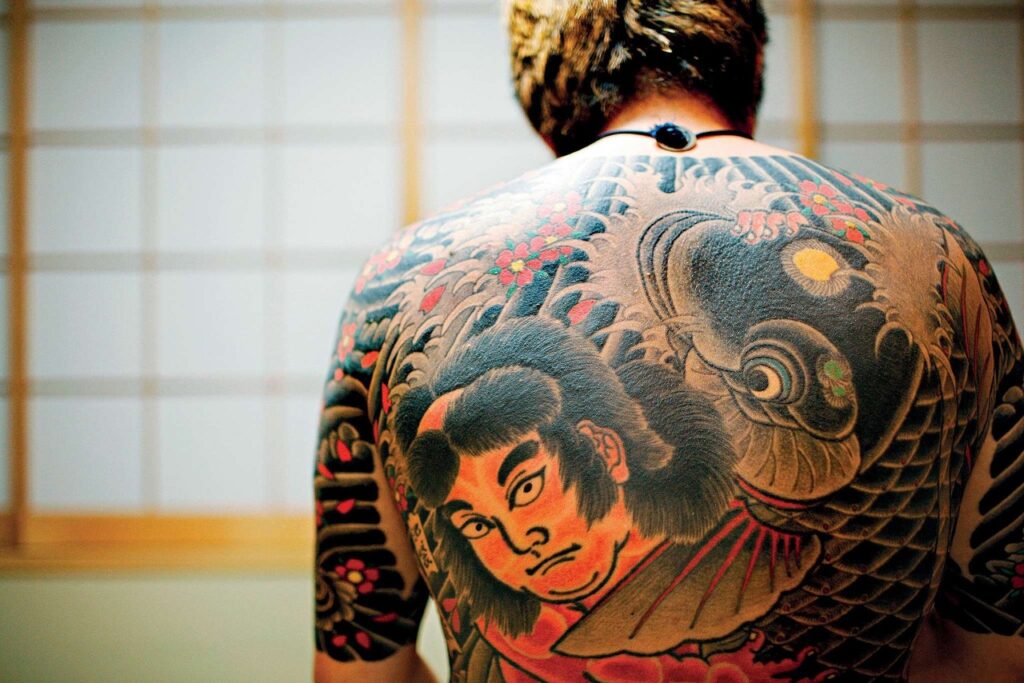
Cultural Appropriation: Understanding the Debate around Japanese Irezumi
Japanese Irezumi, an age-old art form that holds profound cultural significance in Japan, is the epitome of enigmatic beauty. Its intricate designs, steeped in centuries of history, tantalize the senses and bewilder the mind. Yet amidst this captivating allure, a tempestuous debate rages on – one that delves into the realm of cultural appropriation and its delicate implications.
The genesis of tattooing in Japan traces back to a time when it was utilized as a means of penalizing criminals during the Edo era. But as time waltzed forward with graceful strides, tattooing transformed into an exquisite art form adorned with multifarious symbols and irresistible aesthetic charm. In present times, Japanese tattoo artists ardently uphold this cherished tradition by creating resplendent designs that serve as both personal narratives and embodiments of venerable motifs.
However, within recent years, disquietude has been brewing over non-Japanese individuals who adopt Japanese Irezumi without fully comprehending its historical tapestry or grasping its symbolic depths. Critics argue vehemently that such acts are tantamount to disrespect – an undermining force eroding the very essence of preserving and revering cultural traditions. Thus is born an imperative for those captivated by kanji or other Japanese-inspired tattoos to embark upon thorough research prior to committing ink to skin; seeking out reputable tattoo parlors housing artists who possess not only skillful hands but also an intimate familiarity with the culture and heritage interwoven within these designs.
Yet beyond this contentious discourse lies another enthralling conundrum – one which probes at how diverse cultures intertwine within the vast expanse known as the world of tattooing. While some herald artistic expression as boundless and liberating from geographical confines; others steadfastly advocate for recognizing and honoring cultural origins when appropriating specific styles or symbols. This ceaseless deliberation serves as a poignant reminder: dialogue between artists hailing from varied backgrounds is indispensable in cultivating an environment of mutual respect and ethical practices within the global tattooing community.
The Controversy of Non-Japanese Artists Adopting Traditional Japanese Tattooing Techniques
The issue of non-Japanese artists adopting traditional Japanese tattooing techniques is a source of heated debate, primarily centered around the concept of cultural appropriation. Critics argue that these foreign artists, by embracing a practice deeply ingrained in Japanese history and culture, fail to acknowledge the profound significance and sacredness attached to such tattoos. The concern lies in the potential for misinterpretations or disrespectful representations resulting from their appropriation without genuine understanding.
Another aspect causing unease is how these non-Japanese artists may depict certain symbols or imagery associated with traditional Japanese tattoos. For instance, using Chinese characters without comprehending their meanings or historical context could lead to inaccurate translations or unintended connotations. This lack of knowledge perpetuates stereotypes and misconceptions regarding Eastern cultures.
However, it’s important to recognize that not all individuals seeking traditional Japanese tattoos can be lumped into this category. Many genuinely appreciate the art form and seek to honor its rich history and symbolism. These enthusiasts understand the importance of respecting the origins of this craft and make an effort to learn about its stories and experiences within Japanese society rather than simply treating it as a passing fashion trend.
In conclusion, while controversy surrounds non-Japanese artists adopting traditional Japanese tattooing techniques due to concerns over cultural appropriation and potential misrepresentations, it is crucial to differentiate between those who approach this art form with respect for its roots versus those who inadvertently perpetuate stereotypes or misunderstandings. By delving into the historical significance behind each design element and conducting meaningful research prior to getting inked, individuals can better appreciate Japan’s unique horimono tradition while paying homage to its cultural heritage.
Traditional Japanese Tattooing: A Unique Art Form Rooted in History
The enigmatic world of traditional Japanese tattooing unveils a captivating tale steeped in perplexity and burstiness. Its historical origins trace back to the Edo period, an era where tattoos were closely entwined with criminality and the formidable yakuza, or Japanese mafia. However, through the passage of time, these intricate designs have metamorphosed into a revered form of self-expression that commands admiration.
A hallmark characteristic distinguishing traditional Japanese tattoos is their resplendent palette. These audacious hues are meticulously crafted by layer upon layer of ink in an arduous process that engenders depth and opulence. The outcome materializes as a mesmerizing exhibition of artistry that enthralls both the wearer and any fortunate onlooker.
Beyond their visual allure, traditional Japanese tattoos harbor profound symbolic significance. Each design narrates a story or encapsulates an aspect of Japanese culture or mythology. Dragons personify fortitude and supremacy while cherry blossoms embody beauty interlaced with ephemeral existence. These symbols serve not only as personal adornments but also as conduits for conveying messages about one’s principles and convictions.
Equally intriguing are the techniques employed within this ancient practice of tattooing in Japan. In stark contrast to modern methodologies reliant on electric machines, this extraordinary art form relies on hand tools forged from bamboo known as “tebori.” This unique approach empowers artists to exercise unparalleled precision and mastery over each stroke’s placement, resulting in exquisitely detailed designs that leave observers spellbound.
In essence, traditional Japanese tattooing transcends mere body art; it emerges as an intricate form of storytelling deeply entrenched within history and cultural traditions alike. From its association with indomitable samurai warriors to its renaissance among individuals seeking avenues for self-expression today – these tattoos continue to captivate people worldwide due to their evocative symbolism intertwined with impeccable craftsmanship.
What is the enigmatic allure of Japanese Irezumi?
Japanese Irezumi, a mesmerizing embodiment of the ancient tattooing artistry in Japan, captivates with its intricate designs painstakingly etched onto the skin using an amalgamation of hand tools and needles.
What is the profound essence of Japanese Irezumi within the realm of traditional tattoo culture?
Nestled deep within the tapestry of traditional tattoo culture, Japanese Irezumi emanates an aura steeped in history, symbolism, and spirituality. It serves as a resplendent mirror reflecting the values, beliefs, and mythical tales woven intricately into the fabric of Japanese society.
Can you unravel the enigma surrounding the historical origins and symbolic connotations entwined within Japanese tattoos?
The annals bear witness to centuries-old beginnings that birthed this resplendent form of body artistry. Initially employed as indelible marks denoting punishment for criminals, these tattoos gradually metamorphosed into emblems embodying bravery, honor, and unwavering loyalty. Each element and motif interlaced seamlessly throughout these captivating creations carries profound symbolic meaning—an arcane language where dragons evoke wisdom’s transcendence while personifying unyielding strength.
What are some perspectives regarding cultural appropriation pertaining to Japanese Irezumi?
Cultural appropriation—the assimilation of elements from one culture by another—arouses fervent discourse when it comes to embracing such sacred traditions. In particular regard to Japanese Irezumi lies apprehension regarding non-Japanese artists appropriating this revered art form without fully comprehending or revering its cultural significance—a disquietude that may inadvertently diminish its intrinsic value.
How does controversy encircle non-Japanese practitioners adopting hallowed techniques native to traditional Japenese tattooing?
Controversy swirls around like ethereal wisps when pondering upon the adherence to authenticity and respect for the cultural heritage encompassing Japanese Irezumi. Voices resonate, questioning whether these non-Japanese artists possess an innate understanding and a genuine appreciation for this art form, thus potentially leading to misinterpretations or distorted portrayals.
To what extent does traditional Japanese tattooing transcend as an unparalleled artistic marvel?
Traditional Japanese tattooing stands alone in its unrivaled splendor—imbued with a distinctive artistic style, techniques honed through generations, and a profound cultural significance. A fusion of elaborate designs, resplendent hues that dance vibrantly upon the skin’s canvas, and fastidious craftsmanship sets it apart from all other tattoo traditions scattered across the globe.

